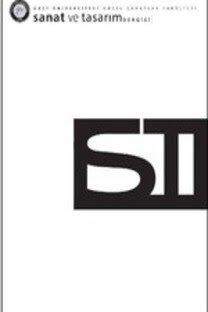Debussy'nin Müziği ve Sembolist Şiir
Debussy’nin müziğinde sembolist şiir ile empresyonist resmin etkisi, çağdaşı bestecilerin etkisinden daha belirgindir. Bestecinin sembolizmle ilişkisi kimi müziklerinde sembolist şiirleri kullanmış olmasıyla sınırlı değildir; sembolist şiir ile Debussy’nin müziği arasında bir yaklaşım/tasarım benzerliği saptanır. Sembolist şiir ve Debussy’nin müziği, önkabullü dizgelerin taşıdığı konvansiyonel anlamlardan sıyrılarak bir tür özerklik kazanmış öğe- lerin, öz niteliklerinden ve birbirleriyle ilişkilerinden doğan bir estetik etki üzerine temellenir. Bu yazıda, sembolist şiirin, çağına göre devrimci sayılabilecek yaklaşımlarının, Debussy’nin müzikal tasarımıyla benzeştiği noktalar, her iki alanda da okuyucuyu yormayacak bir terminolojik derinlikle değerlendirilecektir. Yazının son bölümünde, yapılan tespitler Debussy’nin seçilen yapıtları üzerinden örneklenecektir.
Anahtar Kelimeler:
Debussy, Sembolizm, Sembolist Şiir, Müzik Analizi, Sembolist Müzik
Debussy's Music and Symbolist Poetry
The influence of the symbolist poetry and the impressionist painting on Debussy’s music is stronger than the influence of the music of his era. This close relation is not limited to the fact that Debussy composed many pieces on symbolic poems; there exists a similarity of design between symbolist poetry and Debussy’s music. Both are craving to create their aesthetic language with components that are freed from the conventional meaning of a priori systems; they aim the aesthetic effect to be born out from the inner qualities of the components and their relationships. In this essay, first, the revolutionary aspects of symbolism will be elucidated using poetry analysis, and then the traces of these issues will be examined in Debussy’s musical language. For the sake of non-professional readers, the musical and poetic terminology used in the essay will be limited to a basic level. The last part of the article is reserved for a survey of findings on the selected works by Debussy.
Keywords:
Debussy, Symbolism, Symbolist Poetry, Musical Analysis, Symbolist Music,
___
- Abravanel, Cl. (1999). Symbolism and Performance. J. R. Briscoe (Ed.), Debussy in Performance içinde (s. 28-44). New Haven: Yale University Press.
- Alkan, E. (2006). Sembolizm. İstanbul: Varlık Yayınları.
- Antokoletz, E. (2004). Musical Symbolism in the Operas of Debussy and Bartók. New York: Oxford University Press.
- Barthes, R. (2009). Yazının Sıfır Derecesi ~ Yeni Eleştirel Denemeler. (Çev: T. Yücel). İstanbul: Yapı Kredi Yayınları.
- Berk, İ. (2005). Poetika/Logos, İstanbul: Dünya Kitapları.
- Boucourechliev, A. (1998). Debussy - la Revolution Subtile. Paris: Fayard.
- Brown, M. (1993). Tonality and Form in Debussy’s ‘Prélude à l’après-midi d’un faune’. Music Theory Spectrum, 15 (2), 127-143.
- Caplin, W. (1998) Classical Form. New York: Oxford University Press.
- Çöloğlu, M. E. (2013). Debussy’nin Orkestra Yapıtlarında Tekrar Öğesi ve “Gelişen Çeşitleme” İlkesine Alternatif Parça Bütün Tasarımları, Yayımlanmamış Doktora Tezi. İstanbul: Mimar Sinan Güzel Sanatlar Üniversitesi.
- Debussy, Cl. (1927). Editöre mektup. A. Durand (Ed.), Lettres de Claude Debussy à son Editeur içinde (s.55) Paris: Durand et fils.
- DeVoto, M. (2003). The Debussy sound: Colour, Texture, Gesture. S. Trezise (Ed.), The Cambridge Companion to Debussy içinde (s. 179-196). Cambridge: Cambridge University Press.
- DeVoto, M. (2004). Debussy and the Veil of Tonality: Essays on his Music. New York: Pendragon Press. Ergur, A. (2009), Müzikli Aklın Defteri, İstanbul: Pan Yayıncılık.
- Heredia, J. M. (1995). Unutuş. O. Ülkülü (Ed. ve Çev.), Fransızcada Çok Ünlü Şiirler içinde (s. 54-55). Ankara: Gürler Ofset.
- Howat, R. (2009). Debussy’s Piano Music: Sources and Performance. R. L. Smith (Ed.), Debussy Studies içinde (s. 78-107). Cambridge: Cambridge University Press.
- İnal, T. (Ocak 1981). Simgecilik. Türk Dili, (349), 168-218.
- İnal, T. ve Kantel, S. (Ocak 1981). Sanat için Sanat ve Parnas Şiir Akımı. Türk Dili, (349), 84-96.
- Kula, N. (1996). Fransız Şiirine yansıyan Evrensel İlkeleriyle Parnas. C. Ertem (Ed.), Littera Edebiyat Yazıları (Cilt:7) içinde (s. 121-170). Ankara: Ürün Yayınları.
- Lederer, V. (2007). Debussy: The Quiet Revolutionary. New York: Amadeus Press.
- Lesure, Fr. (2003). Claude Debussy. Paris: Fayard.
- Mallarmé, St. (1987). Brise Marine. Ph. Greffet ve L. Porcher (Ed.), A vous de lire 3 içinde (s. 92). Paris: Hachette.
- McCombie, E. (2003). Mallarmé and Debussy: Unheard Music, Unseen Text. Oxford: Oxford University Press.
- Meyer, L. B. (1956). Emotion and Meaning in Music. Chicago: The University of Chicago Press.
- Ponting, Cl. (2011). Yeni bir Bakış Açısıyla Dünya Tarihi. (Çev: E. B. Özbilen). İstanbul: Alfa Yayınları.
- Rimbaud, A. (2008). Illuminations. (Çev: C. Alkor). İstanbul: Türkiye İş Bankası Kültür Yayınları.
- Roberts, P. (2008). Claude Debussy. Londra: Phaidon.
- Ruwet, N. (1972). Langage, Musique, Poésie. Paris: Edition du Seuil.
- Verlaine, P. (1962). Art Poétique. Y. G. Le Dantec ve J. Borel (Ed.), Oeuvres complètes içinde (s. 326). Paris: Gallimard.
- Verlaine, P. (1997). Şiir Sanatı. A. Behramoğlu ve Ö. İnce (Ed.), Dünya Şiiri Antolojisi içinde (s. 636). (Çev: S. Eyüboğlu ve M. C. Anday). İstanbul: Sosyal Yayınlar.
- Yalçın, M. (2010). Şiirin Ortak Paydası – I. Şiirbilime Giriş. İstanbul: İkaros Yayınları. Yücel, T. (Ocak 1981). Fransız Coşumculuğu. Türk Dili, (349), 59-83. https://math.dartmouth.edu/~doyle/docs/coup/scan/coup.pdf (Erişim tarihi: 11.02.2016).
- ISSN: 1308-2264
- Yayın Aralığı: Yılda 2 Sayı
- Başlangıç: 2015
- Yayıncı: Ankara Hacı Bayram Veli Üniversitesi
Sayıdaki Diğer Makaleler
1920 ve 1950 Yılları Arasında Modern Gitar Müziğine Yön Veren Besteciler
İletişim Aracı Olan Kitapların Grafik Ürün Olarak Tasarlanması ve Şiir Kitaplarında Tasarımın Önemi
Debussy'nin Müziği ve Sembolist Şiir
Dijital Çağda Kitabın Dönüşümü
Levent ÇORUH, Behiye Aycan HİDAYETOĞLU
Baskıresimde Cam Kalıplar İle Çukur Baskı Tekniği: Vitreografi
Yazının Resimde Okunmaz Kullanımı
Güneş OKTAY, Z.rüçhan ŞAHİNOĞLU ALTINEL
Gelenekselden Güncele: İllüstratif Yaklaşımlar
Klarinet Üfleme Yönteminde Karşılaşılan Problemler ve Çözümleri
Photojournalism and Press Photography as a Reassurance of Reality
